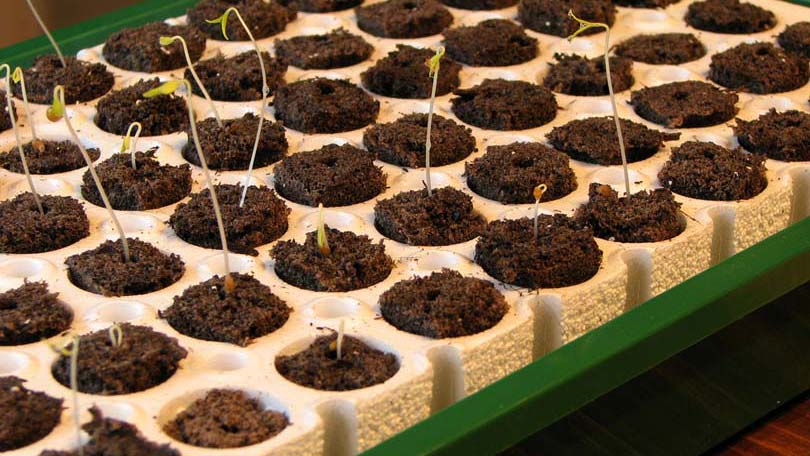
Germination is the most difficult part of growing plants, especially for new gardeners. There are many advantages to growing your garden from seeds, especially if you are growing a vegetable garden. Seeds are less expensive and you will find a greater variety of plants available. There are some things you can do to promote successful germination and have the garden you want.
Choosing Seeds for Germination
A little planning will help ensure successful germination. Start planning by choosing the seeds you will attempt to grow. You want to be sure the seeds are well suited for your location. One of the biggest mistake new gardeners make is to choose seeds that are less than ideal for their area.
You should choose your seeds based on the location of your garden. How much sun does the area get? If the garden is in full sun all afternoon, you don’t want to plant anything that likes shade or partial sun. You will find information on the seed packet about the ideal amount of sun for that plant. Consider the soil conditions of your garden. Test the pH level of the soil. Is the soil slightly acidic or alkaline? Choose plants that thrive in that type of soil.
Information can be found on the seed packet about germination. You will find the germination rate of the seeds as well as planting information. The time from planting to germination and from there to harvest can be found on the seed packet. There will be a date stamped on the outside of the packet. Look for the current year in the stamp. This will indicate that the seeds are fresh. When you purchase fresh seeds, you will have a higher germination rate.
Getting Started
Many seeds need to be germinated inside prior to transplanting the seedlings in your garden. Other seeds should be germinated outside. Read the seed packet to determine how far in advance you should plant the seeds inside the house. Tomatoes, for example, are germinated indoors six weeks prior to transplanting them in the garden. You should time this for after the danger of frost has passed. This date will depend on the area of the country in which you live.
You will need to choose the container that you will use for germination. A variety of flats and containers are available, including flats with individual cells and peat flats. You can find these online or in your local gardening supply store. Choose a container that is two or three inches deep. Be sure it has drainage holes on the bottom of each cup or cell to allow the excess water to drain away from the soil.
Plant your seeds in the individual cells. You can use sterile soil or a soiless mixture that is designed for germination. These contain sphagnum moss and other nutrients. These blends can be found at your local gardening store. Once the plant sprouts, it will need to be transplanted into larger, individual containers. When the seedling is transplanted, use a combination of garden soil and the soiless mixture. This will help the plant prepare for life in the garden and begin to draw nutrients from the soil.
Encouraging Germination
There are a few things you can do to encourage germination. You may be tempted to put the seedling trays or flats in the window for sunlight. In most cases, this is not necessary. Most seeds don’t need sunlight to germinate. Once the seeds begin to sprout, you will want to place them in indirect sunlight for part of the day.
Seeds do need warmth to germinate. Information on the ideal temperature for germination is found on the seed packet. Most seeds like temperatures between sixty five and eighty five degrees. If your seeds need warmer temperatures, don’t place them near a drafty window. Choose a warm area of the house, such as near a heat source, or on top of an appliance, such as the television or refrigerator. If your seeds need more warmth than this can provide, you can purchase heat mats for seed trays.
Be sure to keep the soil moist at all times. Don’t let the soil get dry. Pay particular attention to this detail if your seed trays are near a heat source for added warmth. Placing the seed trays near a heat source will cause the soil or mixture to become dry faster than you may think. Check the soil often and water as needed. Use room temperature water to avoid shocking the sprouting roots.
